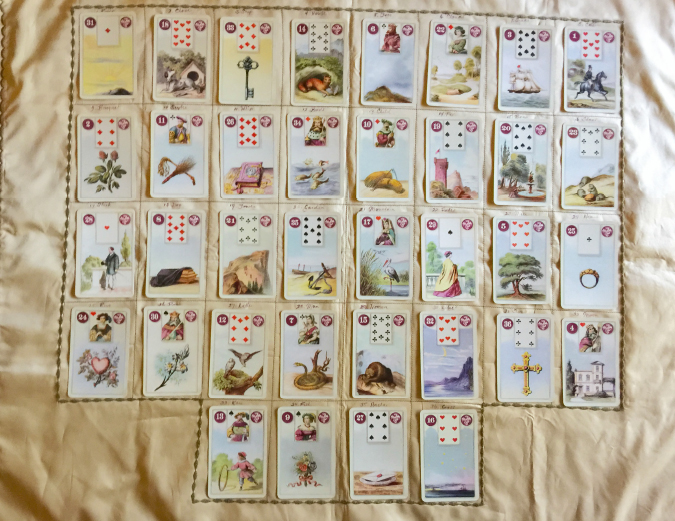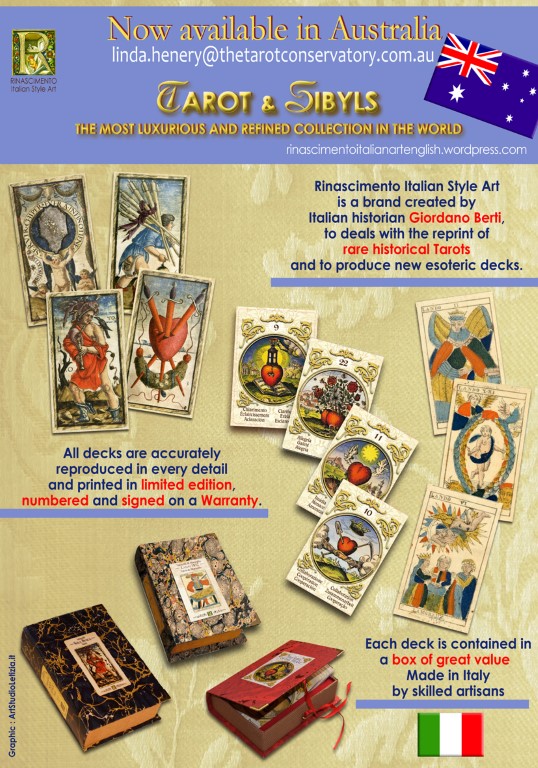The petite Lenormand is a small sized deck consisting of 36 cards. The deck is named after the renowned Parisian professional fortune teller of the Napoleonic era, Mlle Marie Anne Le Normand 1772-1843. Due to the necessary secrecy of Mlle Le Normand’s work, it is unclear whether or not she indeed used this particular oracle in her practice, however, after her death Mlle Le Normand’s name was soon was attached to published decks. The earliest version of the deck we know today date back to the German publication of the The Game of Hope in 1799, a game in which the 36 cards were laid out into four rows of nine cards to create a board and a dice used to determine a players movements. The images and meanings used within the Game of Hope are, in many instances, relatable to an earlier deck of cards, advertised in 1796 as fortune telling parlour games. These earlier Viennese cards known as Coffee Cards were based on the symbols and meanings from coffee ground readings and give us an understanding of the basis of the images and meanings used in today’s Lenormand decks.
Typical to the times, Lenormand was very much a domestic practice exercised in the home and the skill was passed on verbally to those wanting to learn. For centuries Lenormands roots have been firmly planting within foreign languages although the within the last decade the release of the first English books on the subject have lead to an explosion of interest, new decks and more books and there’s no sign of the momentum slowing!
What is Lenormand?
The deck of thirty six cards with simplistic, non-esoteric images, divided into the four playing card suits, could mistakenly be viewed as being too basic for in depth reading outcomes. Unlike the rich nature of tarot cards, the images on Lenormand cards are immediately identifiable to even beginner readers and will, over time, display their unique ability to describe complex situations by means of combining not only the layered meanings of each card alone but by also weaving together the meanings of the surrounding cards.
The deck contains a balance of cards with negative, positive and neutral meanings and Lenormand can be used to describe, with great detail, an incredible amount of differing scenarios, such as people, places, actions with both ease and speed, such is their direct form of communication.

While Lenormand and Tarot speak somewhat different languages, they each have their own strengths and do in fact work wonderfully well together.
They are both essentially decks of cards used to reflect and predict and invoke the reader’s intuition, each a tool to connect with higher knowledge.


